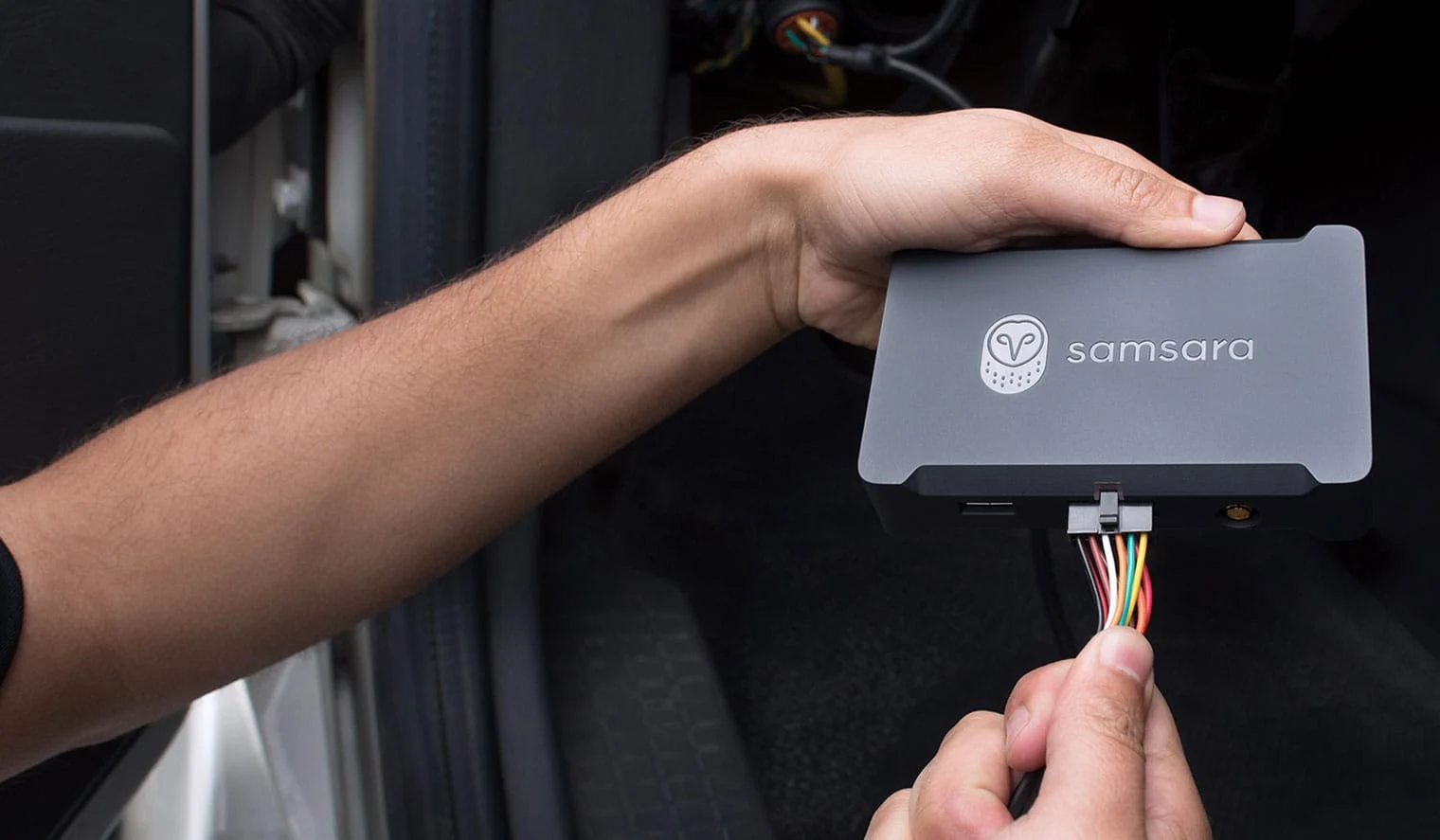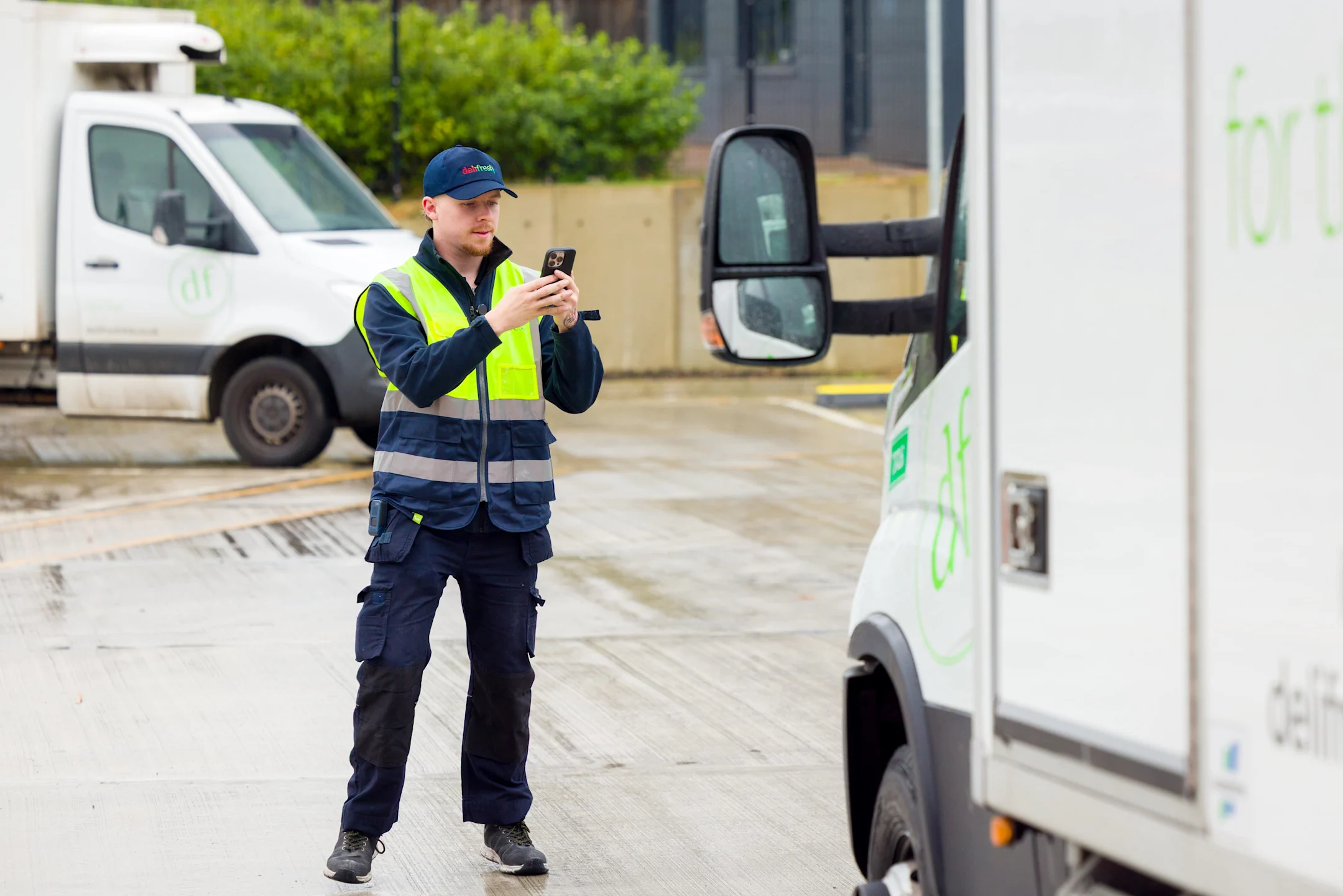Perspectives
The Next Fleet Generation : How Samsara customers are improving driver recruitment and retention
November 3, 2025
UK&I Director of Enterprise and Mid Market Sales

Get the latest from Samsara
Subscribe nowThis blog is part of The Next Fleet Generation, a five-part series based on Samsara’s latest research into the UK’s driver recruitment challenge. Together, the blogs explore how technology, people and perception are reshaping driving and physical operations, examining everything from Gen Z’s attitudes and life on the road to the ways employers are building the next generation of fleets.
Drivers are the kingpins of physical operations. Without them, nothing moves. Which is why when industry bodies such as the Road Haulage Association (RHA) say that the UK needs 200,000 new drivers over the next five years, we should all sit up and take notice.
But behind the headlines, it’s not all doom and gloom. When you talk to employers who are investing in their people, a very different picture emerges. The six businesses we interviewed—spanning food distribution, passenger transport, drainage, plant hire and more—show what proactive, engaged employers can achieve.
By investing in drivers at every stage—attracting new recruits, helping them through the early years, and retaining trusted and skilled staff—they’re securing the future of their operations.
Peter Cox, Head of Transport, CLEAN Linen & Workwear
CLEAN Linen & Workwear is a national provider of linens and uniforms for hotels and businesses. Its 200 drivers make more than 1.5 million deliveries each year.
I see the UK driver shortage as real and structural. If we can’t bring the average driver age down from around 51 years, the problem only gets worse. The numbers quoted by industry bodies feel directionally right, but the weak link isn’t people getting a licence—it’s the transition that follows. After all, anyone can earn a ticket. The tough bit is turning a newly qualified driver into a confident, low-risk professional.
At CLEAN, we’ve tried to remove that transition gap. We employ government-backed HGV Skills Bootcamp recruits from day one and put them through our in-house Driver Academy. Over roughly six months, new starters rotate through customer service, engineering and the factory floor. That builds context and pride. Why is that important? Because it’s not just a driving job, it’s a frontline customer role within a complex operation.
Technology is central to how we recruit, onboard, and retain. Telematics, AI-enabled dash cams and modern safety aids are game-changers, especially for early-stage risk management. Cabs today are lit up like Christmas trees, so the cognitive load on drivers is high. Objective data helps us coach fairly and reward consistently. We’re also using Samsara for onboarding workflows, connected forms, and training so new drivers get structured support from day one.
That’s what we're doing. But beyond our four walls, the industry still faces a challenge in terms of perception and inclusion.
"Too many people think driving is monotonous, isolating, or outdated, while in reality, it’s a high-skill, high-responsibility profession with multiple career paths whether that be in operations, compliance, engineering, learning and development, finance, or HR. "
Lee Cook, Compliance Manager, FM Conway
FM Conway is an essential infrastructure partner working with network operators, local authorities and private clients. Their employees drive 3,000+ vehicles—from 1.5 tonnes up to 80 tonnes—often in heavy-traffic areas covering more than 16 million miles a year. Lee—dubbed the ‘Baddest Heavyweight in Kent’—is a keen boxer and passionate about wellbeing.
I see the UK driver shortage up close, and it is a cause for concern. In many of the interviews I’ve recently taken, only two or three candidates were straight out of education or just starting out on their career journey. The majority of people I see are already well into their driving careers and often moving between companies.
There’s definitely a generational gap, with the older workforce slowly fizzling out and too few young people stepping in. A big barrier is down to experience—or should I say ‘lack of’ experience—with many employers wanting three years behind the wheel. But how can you get a job if you don’t have the experience? That’s why we’ve decided to break that cycle by hiring newly licensed drivers with zero experience and training them in-house so they get that crucial first step.
“Driving can absolutely appeal to young people—the kit is incredible. Kids love the tech—you’re driving machinery worth the same as a Rolls-Royce or a Lamborghini.”
But all they hear are stories about ‘long hours, stress, and loneliness’ and then they switch off.
At FM Conway, we invest in recruitment and outreach. We attend colleges, careers fairs and events to explain the role, the technology, and the career pathways open to young adults. Our size and reputation help to attract candidates—even without advertising salaries—because people want a stable employer with modern equipment and structured training. Apprenticeships and funded courses are a big draw too.
Gavin Bennett, Managing Director, Bennetts Coaches
Bennetts Coaches operates 37 full-size coaches across Gloucester and beyond, running National Express services to London, school routes for 850 children, and prestigious private hire work. As a third-generation family business with 63 years of fatality-free operations, maintaining their award-winning safety standards is paramount.
I know there’s a driver shortage across the industry, but at Bennetts, we’re not feeling it the same way. Many of our drivers have been with us for a long time—10, 15, even 25 years. For me, stability comes from culture. We’re a family-run business, and I treat staff like friends and family.
We do like to bring in younger drivers, but the barriers to entry are real. Insurance rules used to block anyone under 21—or without three years’ experience—which makes life tricky if no one will give you that first chance. So I spoke to our insurer and got those restrictions lifted. I’m also lobbying the government via the Confederation of Passenger Transport (CPT), Road Haulage Association (RHA) and National Express to try to modernise the rules.
"I know people talk about the industry having an “image problem". For me, the real issue isn’t image, it’s perception. Too many people think driving is a dead end. It isn’t. Passenger transport is customer-facing, mobile, and full of progression routes, whether that means a career in the workshop, compliance, or transport management."
Technology has been transformational. I’m a big fan of Samsara, especially things like routes on the phone, digital walk-around checks, scanned service sheets, and live tracking that’s precise enough for controllers to talk drivers through diversions in real time.
Event-triggered training nudges help drivers improve without a heavy-handed chat. Cameras and telematics protect drivers from unfair complaints. I’ve had cases where someone accused a driver of tailgating and flashing lights, and the footage showed there wasn’t even a car in front. That kind of fact-based management builds trust.
Amber Kirkby, Fleet Systems Team Leader, Lanes Group
With a fleet of 4,000 vehicles nationwide, Lanes Group is the UK's largest provider of wastewater solutions.
I work in drainage, which means most of our “drivers” are actually field operatives who also drive specialist vehicles. The shortage everyone talks about isn’t just HGV licences—it’s people with the technical skills to run vacuum and jetting equipment and who can also handle the road.
Too many candidates still see driving as a stopgap, not a skilled, long-term career. That’s why we invest so much in apprenticeships, structured training, and early exposure to the wider business so people can see the career paths ahead. When people see the whole operation, the career penny drops
Entry routes are varied. We bring in drainage assistants who ride along first, then help them earn Class 2 or Class 1. Others arrive with an HGV and learn the drainage craft with us.
"For me, retention is about recognition and wellbeing, not just pay. We run a driver rewards scheme—awarding the safest drivers and those who’ve reduced speeding—so there’s healthy competition. We shout out good deeds on social channels, and we’ve built real support networks. The message we try to get across is that “you’re not one of 4,000 drivers—you’re a person, and we treat you that way”.
Technology ties the whole thing together. Practically everything runs through Samsara now. Digital walk-around checks feed defects straight to maintenance, wellbeing and HR forms route to the right teams, safety data and incident video make coaching fair, while payroll and other workflows live in one place.
For me, changing perceptions is as important as changing processes. People hear “drainage company” and think, “that’s not for me”. But when they see what actually goes into the job—the tech, the safety, the customer work—that’s when they change their mind.
Andrew Sharp, Transport Shift Manager, Delifresh
With around 150 drivers covering 100 different routes from Brighton to Glasgow, Delifresh serves over 2,000 customers across the UK catering and hospitality industry.
I don’t think the “driver shortage” is the same either across the industry or the country. In Bradford, where we’re based, the pipeline of Class 1 applicants is strong, but around 80% are new passers who face that awkward stage of “no experience, no job.”
At Delifresh, we flip the model. We hire people based on their attitude. New passers get a named mentor, realistic route pairings, and as much reversing practice in the yard as they want. For us, our approach to driver retention starts when we place an advert.
When it comes to technology, the framing is simple. It’s all about protection and partnership. Cameras and telematics have exonerated our drivers after incidents, while objective data underpins fair coaching and recognition. Drivers describe Samsara as “like having a co-pilot”. In other words, you may be alone between drops, but you’re never “on your own”.
What needs to change? Well, I think we need to incentivise employers to take new passers with supervised pathways. We need to strengthen the 7.5-tonne rung so people aren’t forced to leapfrog the pipeline.
And we also need to fix the narrative. Social media is littered with negative stories, yet very little about the skill, tech, service, and progression in modern driving. We also need to widen the pipeline, especially if we want to encourage more female applicants.
"My message to anyone who joins us is this. If you bring the right attitude, we’ll teach the rest. We’ll set you up to succeed, keep you safe, and show you a path—from cab to office—if that’s where you want to go."
Antony Draper, Director of Health, Safety, Environment & Quality, Vp Brandon Hire Station
With over 50 years in the equipment hire industry, Vp Brandon Hire Station have a fleet of more than 500 vehicles across 125 locations throughout the UK.
I know people talk about the driver shortage, but it’s not as simple as that. In Manchester, we can fill a role quickly. In other depots, I’ve had vacancies open for months. That’s the reality. It’s patchy and uneven.
Most of our drivers have been with us a while, but younger drivers are scarce. I think the industry gets it wrong when we treat driving as “entry level”. It’s not. Actually, it’s the most customer-facing role in our business. Our drivers are the people on site, with customers every day. That takes people skills as much as driving. That’s why retention is so important. And it’s why we’ve built recognition into our culture.
We run quarterly driver rewards because we want to acknowledge their professionalism. One of our drivers recently did more than 6,000 miles in a month with a safety score of 100 and an eco score over 80. In the past, that would have been a pat on the back. Now it’s a reward. That’s what progress looks like.
Technology underpins everything. We’ve got telematics, AI dash cams, connected vehicles checks, and digital workflows. Lone working has been replaced by real-time visibility and support. If there’s a complaint, the footage exonerates good drivers. If there’s a safety event, it’s a coaching opportunity, not a punishment.
"If I could pull levers across the industry, I’d double down on skills and recognise safe driving. Because this is not just about driving. It’s about people, professionalism and progression."
Read more:
Get the latest from Samsara
Subscribe now














